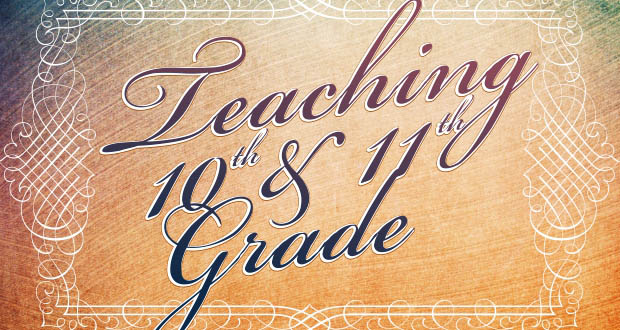Literature
While the English courses teach com-position and thinking skills, the literature courses survey the field of world literature in tenth grade and American literature in eleventh grade.
Serving as an introduction to excel-lent literary quality on an adult level, both texts contain selections from au-thors well-recognized for their writings. Students are encouraged to read longer selections as well.
In addition to the discussion questions in the textbook, Dr. Mitch Kalpakgian, a former professor at Christendom College, wrote discussion questions on the literary selections relating to the Catholic perspective. For instance, in The Rime of the Ancient Mariner, the student is asked, ‘How does the Ancient Mariner sin and experience guilt? How does he show contrition, confession, and penance? What are the consequences of sin in this poem? What are the consequences of penance?’
One of the problems we hear about in the colleges today is a lack of courses teaching authors whose writings were influenced by the immense legacy of Christianity in Western Culture. These courses may be the only opportunity some students have to learn about the influence of Christian values and culture on Western Civilization.
We at Seton believe that every educated person should be familiar with the great literary classics of Western Culture. Every educated person should have read and studied the classics of European and American literature. We want to help our students begin their exposure to the great classics through survey courses in literature.
We deplore the fact that many colleges today are ignoring or belittling the literary legacy of the West in favor of contemporary literature and literature from non-western cultures. It is not that the latter are not worthwhile, but they do not generally reflect the cultural heritage and Christian faith in which we live.
History
Tenth graders study world history with the text Christ the King, Lord of History and eleventh graders study American History with Christ and the Americas. Both of these texts, by Dr. Anne Carroll, are written from the viewpoint that the most important event in history is the Incarnation.
We are also happy to report that our high school history teacher, Mr. Bruce Clark, was named for inclusion in Who’s Who Among America’s Teachers.
We believe the history courses are excellent. While dates and events and people must be learned, it is important for students to see the broad picture as societies move closer or farther away from the laws of God. Ultimately, we hope that students learn the lessons of the past, and apply them in their own lives as they become involved in the political and civic activities of their own community.
The text material in the lesson plans are important, not only for directions in answering questions in regard to the ‘significance’ questions, but also in additional supplemental remarks.
In the eleventh grade, two historical persuasive essays are required. Mr. Clark advises students to quote and identify sources, and to ‘reinforce your position by illustrating how history would have been negatively affected if your ideas had not been followed, or positively if they had been followed.’
Many students have told us that history has come alive for them after taking these two courses, and several have decided to make history their major in college.
Mathematics
In the tenth and eleventh grades, students take Geometry and Algebra II. Geometry is required, while Algebra II is highly recommended. We continue to use the Saxon series for both Algebra and Geometry, but a Houghton-Mifflin series is also available for the Geometry course.
The SAT or ACT tests, which may be taken in the tenth grade for practice, and in the eleventh grade to send to colleges, include mainly first year algebra and geometry. It is vital for students to purchase one of the available SAT preparation books (The Official SAT Study Guide is available from Seton Educational Media for $20.00 plus $4 shipping and handling). This book offers 10 practice tests, and is the only book that features the official SAT practice tests created by the maker. These might even be helpful to study along with the Algebra and Geometry courses.
We encourage parents to monitor the math courses closely. A wrong concept learned early and practiced often could lead to serious frustrations. Our math counselor is available during regular business hours to help out.
Your thoughts
How are your children doing with these subjects? Share your comments below.
Released for the first time online, this article originally appeared in the April 1996 Edition of the Seton Newsletter, Volume XIII, Number 4

 Seton Magazine Catholic Homeschool Articles, Advice & Resources
Seton Magazine Catholic Homeschool Articles, Advice & Resources
